Doug Thompson
Member
Hello, if you don't know me I'm a woodturner (hats) and Thompson Lathe Tools.
First... I know nothing about turning pens, that said;
What tools are used most when turning pens? I have some 1/4 diameter round stock that will be milled for this batch, should spindle gouges or detail gouges be made or just make both? I've been asked to make a round skew blank... what else could be done?
The second part of the quesion is how long should they be made and what length should the flute be milled. My first though is a 4 inch length (sticking out from the handle) and a 2-1/2 flute.
Could you please give some ideas how pen turning tools should be made.
Thanks for your help,
Doug
First... I know nothing about turning pens, that said;
What tools are used most when turning pens? I have some 1/4 diameter round stock that will be milled for this batch, should spindle gouges or detail gouges be made or just make both? I've been asked to make a round skew blank... what else could be done?
The second part of the quesion is how long should they be made and what length should the flute be milled. My first though is a 4 inch length (sticking out from the handle) and a 2-1/2 flute.
Could you please give some ideas how pen turning tools should be made.
Thanks for your help,
Doug

